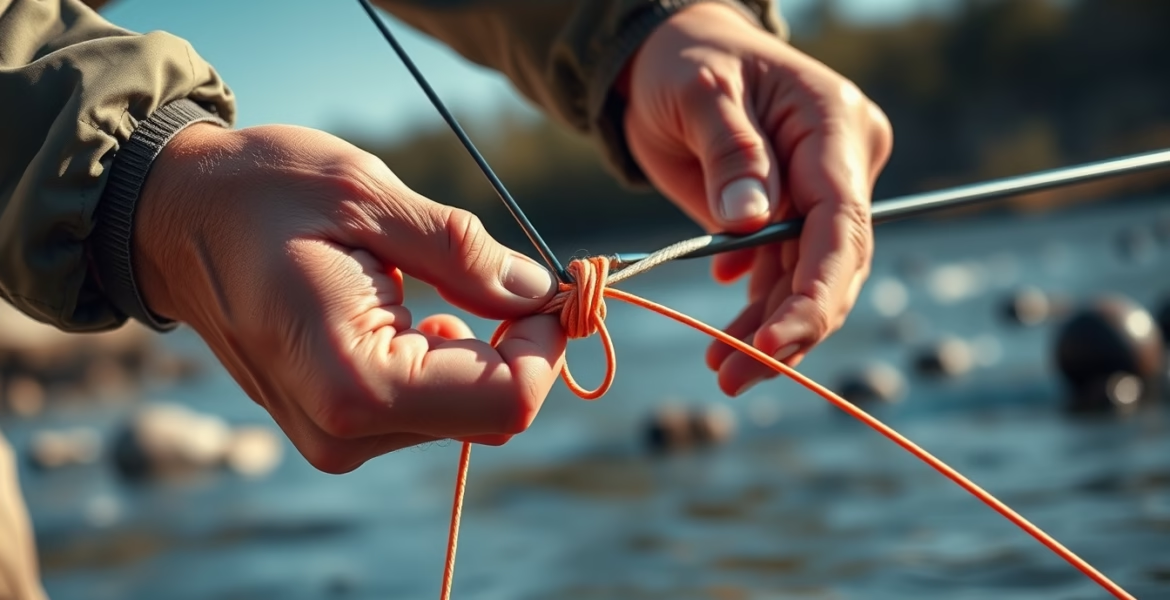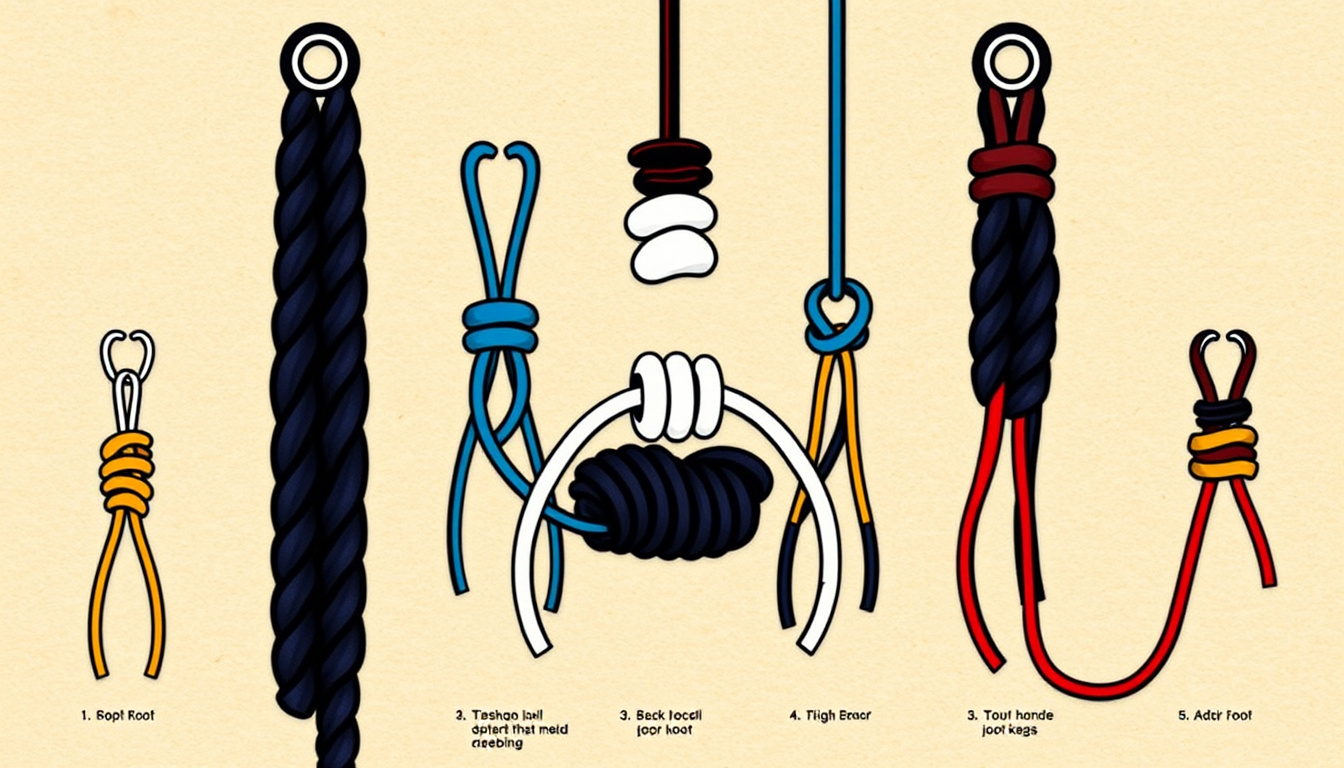
Mastering Fishing Knots: Essential Techniques Every Angler Should Know
On July 17, 2025 by Andy FordFishing is a skill. It builds on patience, technique, and know‐how. An angler learns many things. Tying strong knots holds top rank. Whether you are new or skilled, knowing fishing knots and when to use them helps your fishing win. In this article, we explain fishing knots, list key knot types, and give tips to tie knots that hold.
Why Mastering Fishing Knots Matters
Fishing knots do more than attach hooks to lines. They affect your cast, the strength of your gear, and your grip when you fight a fish. A well‐tied knot keeps the hook or lure in place. The line stands pressure. You gain more trust in your tackle.
Bad knots often cause lost fish and gear. They bring tough times on the water. Good knot skills stop these issues. Focus on the catch and enjoy every moment.
Basic Types of Fishing Knots Every Angler Should Know
Many fishing knots exist. Some stick out by being strong, simple, and versatile. Here are the key knots every angler should have:
1. Improved Clinch Knot
The Improved Clinch Knot ties a hook, swivel, or lure to the line. It works with monofilament and fluorocarbon lines. It is easy to learn and holds well.
How to tie it:
- Pass the line through the hook eye.
- Wrap the tail around the standing line 5–7 times.
- Slip the tail back through the first loop by the eye and then through the new large loop.
- Wet the knot and pull it tight.
2. Palomar Knot
The Palomar Knot is known for its strength. It keeps nearly all the line strength, even with braided lines. Tying it is a simple task.
How to tie it:
- Double about 6 inches of line. Pass the doubled line through the hook eye.
- Make a loose overhand knot with the doubled line.
- Run the hook through the loop.
- Wet and pull the standing and tail ends to lock the knot.
3. Uni Knot
The Uni Knot works well for hooking lures, tying the line to hooks, or joining two lines. It is very flexible.
How to tie it:
- Run the line through the hook eye. Turn back next to the standing line.
- Tie an overhand knot around the standing line with the doubled run.
- Slide the knot to the eye.
- Pull hard and trim the tail end.
4. Loop Knot (Perfection Loop)
The Perfection Loop makes a loop at the line end so lures move freely. It can help with enticing bait.

How to tie it:
- Tie an overhand knot without making it tight.
- Thread the tail through the small loop of the overhand knot.
- Pull the tail slowly while making the loop.
5. Blood Knot (Line-to-Line Knot)
The Blood Knot ties two lines of the same size. It is good for making longer leaders or joining different lines.
How to tie it:
- Overlap the ends of two lines.
- Wrap one tail around the second line 4–6 times.
- Repeat with the other tail.
- Feed both tails through the middle of the overlaps.
- Wet and pull the knot tight.
Tips for Tying Strong and Reliable Fishing Knots
Tying a good knot takes care and practice. Here are ideas to get knots that work when needed:
• Wet the line before pulling knots tight. Water or spit reduces friction and heat while tightening.
• Pick the right knot for your line type. Some knots suit braided lines; others fit monofilament better.
• Cut the tail ends close but not too close. A small tail helps keep the knot secure.
• Practice often. Each try makes your knots better.
• Check your knots before and while fishing. A quick knot check saves a big catch.
When to Use Different Fishing Knots
Choose a knot by the kind of fishing and by your gear:
– Use the Improved Clinch Knot for standard hook ties with monofilament.
– Pick the Palomar Knot when you use braided line on lures.
– The Uni Knot fits leaders and hook ties well.
– Use the Perfection Loop to form loops that help lure action.
– Tie the Blood Knot to join two lines when adding a leader or tippet.
Essential Materials and Tools for Knot Tying
The right tools help you get neat knots:
• Sharp scissors or line clippers to cut lines well.
• Knot tools or pliers can help pull knots tight.
• Water or spit to wet the line.
• Good fishing line that meets your fishing style.
Frequently Asked Questions about Fishing Knots
Q1: What is the easiest fishing knot for beginners?
A: Many think the Improved Clinch Knot is best for starters. Its steps are clear and the hold is strong.
Q2: Can the same fishing knot work with every line type?
A: Not all the time. For example, the Palomar Knot does well with braided lines. The Improved Clinch Knot fits monofilament. Choose the knot that works with your line.
Q3: How often should I retie my fishing knots?
A: It is wise to check and retie knots often, especially after a catch or a snag. Knots can loosen with time and stress.
Expert Tips from Professional Anglers
Many top anglers say fishing knots have a big role in success and trust. They point out that time spent on knots helps you work better and enjoy fishing more.
Final Thoughts: Why You Should Prioritize Knot Mastery Today
Fishing gear works well only when you use it right. Tying fishing knots is a key skill that links every part of your fishing. It stops broken lines, keeps your lure in place, and lifts your chances of a great catch.
So, if you plan a fishing day or a long trip, spend time learning and practicing these key fishing knots. Your future catch will smile back.
Ready to Improve Your Fishing?
Start by practicing these fishing knots. Gather your gear, watch simple videos, and test your knots before you go out. The more sure you are with your knots, the more fun and success you will have on the water. Do not let a weak knot spoil your fishing day—learn to tie strong knots and catch more fish!

Leave a Reply